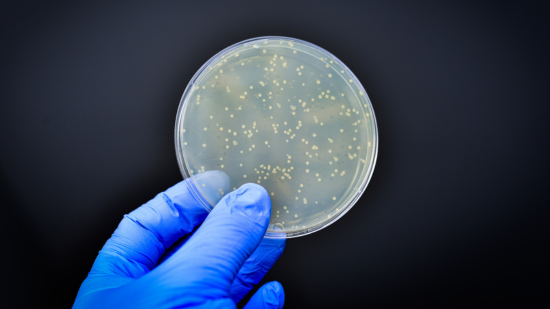A team from the Institute of Agrochemistry and Food Technology (IATA), located in the University of Valencia Scienc Park, is involved in research in which they have analysed more than 2,000 samples from raw materials, food and surfaces of industrial environments. These findings are key to designing more effective strategies for preventing antibiotic resistance in food production
A European project with researchers from the CSIC, including the Institute of Agrochemistry and Food Technology (IATA), located in the scientific-academic area of the UV Science Park (PCUV), has performed extensive metagenomic sequencing of more than 2,000 samples from raw materials, food (such as milk, meat, fish, cheese or vegetables) and surfaces in industrial environments of 100 European companies (including more than 50 located in the province of León and the Principality of Asturias) and found that over 70% of the known bacterial antibiotic resistance genes are present in the food production chain, although only some of them are particularly prevalent. The results are published in the prestigious journal Nature Microbiology.
Research has focused on resistome, the set of genes that give bacteria the ability to resist the effects of antibiotics. "Although it was known that the food chain can act as a route of transmission of bacteria resistant to antibiotics, until now there had not been such an extensive and detailed study," says CSIC researcher Narciso M. Quijada, from the Institute of Functional Biology and Genomics (IBFG), from Salamanca.
The team has applied a total metagenomic sequencing approach, which allows all the DNA present in a sample to be analysed without the need to grow the micro-organisms. Based on this data, a rapid and direct analysis has been monitored to identify antibiotic resistance genes (AMRGs) in the detected microorganisms. "This methodology and the use of bioinformatics tools not only allow to detect and quantify resistance to antibiotics, but also link them to microbial genomes and elements responsible for their dissemination," explains Raúl Cabrera, member of the Bioinformatics group, Computational Biology and Data Science of IATA-CSIC and co-author of the study.
"This methodology and the use of bioinformatics tools not only allow to detect and quantify resistance to antibiotics, but also link them to microbial genomes and elements responsible for their dissemination", Raúl Cabrera, member of the Bioinformatics group, Computational Biology and Data Science from IATA-CSIC and co-author of the study
The prevalent genes include some that confer resistance to antibiotics such as tetracyclines, beta-lactams, aminoglycosides and macrolides, key groups in the treatment of human and animal infections, according to the researchers. More than 60% of the samples collected (including food, raw materials, surfaces, tools, etc.) contained at least one antimicrobial resistance gene.
"In addition, analyses have identified the main bacteria carrying these genes and many of them are members of the ESKAPEE group, known for their role in difficult-to-treat hospital infections such as Escherichia coli, Staphylococcus aureus or Klebsiella pneumoniae", lists the researcher of the Institute of Dairy Products of Asturias (IPLA) Abelardo Margolles.
They have also been detected in species such as Staphylococcus equorum and Acinetobacter johnsonii, which are associated with food environments and even beneficial production characteristics.
Transfer of resistance between bacteria
One particularly relevant finding, the researcher points out, is that "about 40% of these genes are associated with mobile genetic elements which can facilitate their transfer between bacteria, increasing the risk of resistance spreading". "The study also provides evidence on how certain industrial processes and manufacturing conditions can influence the presence and transmission of these genes, which opens the door to improvements in food production systems," says Quijada.
"Focusing on the evolution of resistome throughout the food production process, the study reveals that the maturation process drastically changes the content of resistome in products, where the genes come mainly from bacteria associated with the food production process (S. equorum, etc.), indicating that these organisms displace those present in the raw materials or early stages of production" explains Quijada. Bacteria from the early stages of production predominate in unmatured/fermented products and in those ready for consumption, where the resistome load is mostly associated with bacteria derived from human handling, including ESKAPEE.
These findings are key to designing more effective strategies for the use of antibiotics and disinfectants in food production, and to move towards management policies that help curb the growing problem of antimicrobial resistance with better surveillance strategies and mitigation
The researchers stress that these findings are key to designing more effective strategies for the use of antibiotics and disinfectants in food production, and to move towards management policies that help curb the growing problem of antimicrobial resistance with better monitoring and mitigation strategies.
European collaboration
This study is part of the European project MASTER (Microbiome Applications for Sustainable food systems through Technologies and EnteRprise), coordinated by Teagasc (Ireland). The sequencing study was coordinated by professors Avelino Álvarez Ordóñez and José Francisco Cobo Díaz (University of Leon), and researcher Narciso M. Quijada (Institute of Functional and Genomic Biology and FFoQSI). In addition to the Institute of Agrochemistry and Food Technology (IATA-CSIC), research staff from leading centres such as the Institute of Dairy Products of Asturias (IPLA-CSIC), the universities of Naples Federico II and Trento (Italy) have collaborated in the work, the University of Veterinary Medicine in Vienna (Austria) and the agri-food research centres FFoQSI (Austria), Teagasc (Ireland) and Matis (Iceland).
Source: IATA
Quijada et al., The food-associated resistome is shaped by processing and production environments. Nature Microbiology. DOI: 10.1038/s41564-025-02059-8
--
Recent Posts


